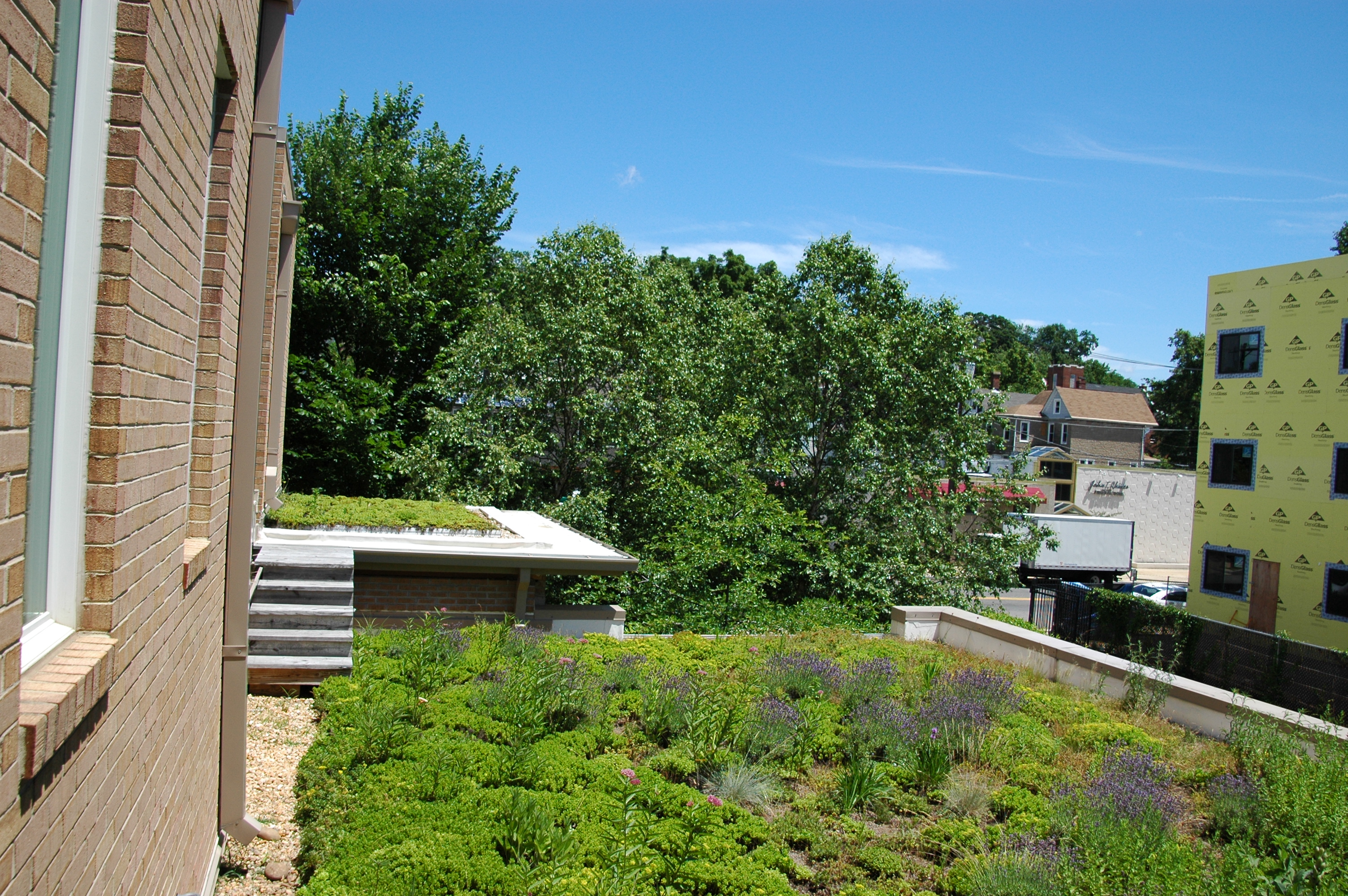
In “normal” times (whatever those are) our energy-efficient and environmentally friendly building in the Brookland neighborhood of Washington, DC is a bustling place with arborists coming and going for residential and community site planning visits, educators heading to and from schools getting the next generation excited about environmental stewardship, tree planting crew heading out to restore, enhance, and protect our tree canopy, and the dozens of other folks that help execute our mission each and every day. It’s also usually a hub of volunteer activity, as we’ve been known to host some of our classes, from Advocacy in The District to Your City, Your Trees!
These days, it’s a bit quieter. So we thought it’d be a great time to show off some of the great features of our HQ.
Our offices are in a renovated building which we enlarged to accommodate an expanding number of staff, classes and workshops. The site boasts a bioretention planter, three green roofs and a white roof. These “green” features qualified our headquarters to participate in the Sustainable Sites Initiative (SITES) Pilot Program! Climate change mitigation is so much more than trees.
Bioretention planters are stormwater infiltration cells. What does that mean? It’s a landscape system that filters pollutants and sediment from runoff. The layers of plant material, mulch, planting media (a mix of soil, sand, and compost), and stone capture metals, nutrients, and bacteria that flow into the surrounding rivers. The rainwater is held in the planting bed until it infiltrates into the ground or evaporates. While our planter is quite large, bioretention systems can fit into small spaces, making it adaptable to curb extensions, tree spaces along the road, medians, terraced slopes, and planter boxes – perfect for the smaller yards and property spaces that dominate urban spaces.
A feature of our planter that we’re especially proud of? Trees! Trees are a powerful green infrastructure tool due to their ability to capture water on leaves, direct it to the ground on stems, absorb it through root systems, and transpire it as water vapor directly back into the atmosphere. Our rain garden even features a few converted pawpaw trees that provide delicious fruit!
While it’s a feature fewer people get to enjoy, we also have a green roof! Green roofs help mitigate the damaging effects of urban heat island and, like bioretention planters, help absorb rain so it doesn’t become polluted stormwater runoff and degrade waterways.
RiverSmart Homes, the DOEE program that we’re a part of, provides so much more than shade trees. You too can outfit your space – no matter the size – with any number of the features we’ve mentioned. There are programs for bioretention planters, permeable pavers, green roofs, solar panels and more! There are so many ways to contribute positively to urban resilience that doesn’t have to be planting trees, although we think that’s the best way (wink wink).




